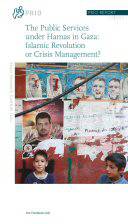How has the Islamic Resistance Movement (Hamas) tackled the challenge of ruling the Gaza Strip in a context of almost total isolation? In 2006 Hamas won a parliamentary election; the year after, infighting with its long-time rival, Fatah, resulted in a complete military takeover of Gaza by Hamas forces. The victorious Palestinian Islamists were, however, soon challenged by inter-national boycott, Israeli embargo and military assaults, Palestinian division and economic paralysis. As a response, Hamas sought to fortify its control on the ground by a range of administrative, military and economic moves.
This report explores Hamas’s restructuring of governmental institutions after its takeover, its strategies for economic survival, and its handling of the delicate relationship with the appointed Fatah-affiliated government in the West Bank, which enjoys international backing.
Three case studies reveal the impact of the takeover on three public services in Gaza: the judiciary, the education sector and the health sector. Through extensive fieldwork interviews with politicians, employees and users of these public sectors, it is investigated to what extent the rivaling governments in Gaza and the West Bank have established mechanisms of coordination to ensure a minimum of basic public services.
Can any long-term ambitions on the part of Hamas be determined by its conduct in power? The Islamic movement’s practice may offer some indications as to what extent Hamas is preparing the ground for longterm Islamic rule in Gaza or merely applying temporary measures while awaiting political reconciliation.








